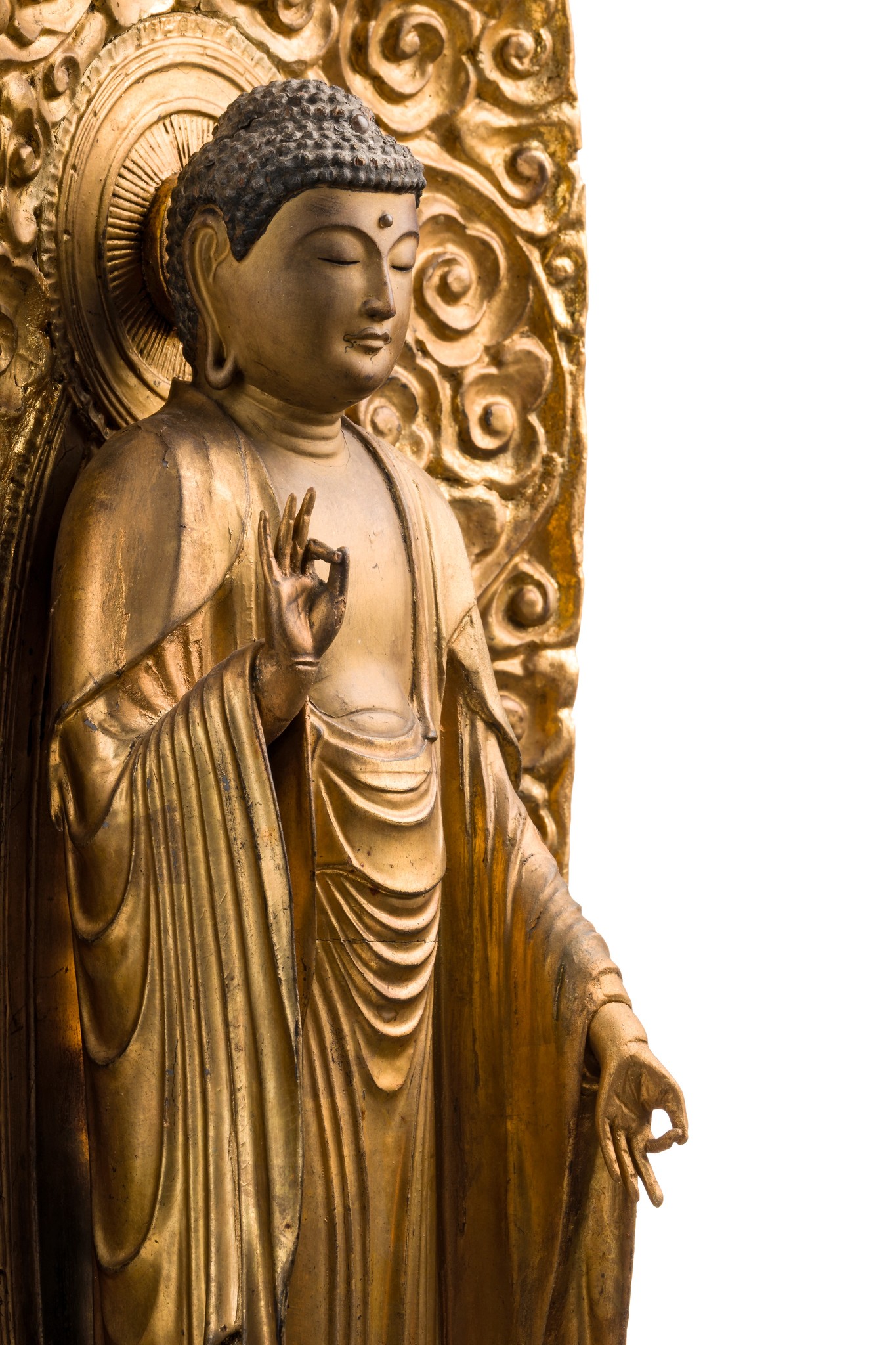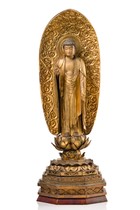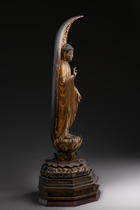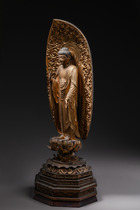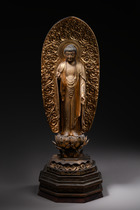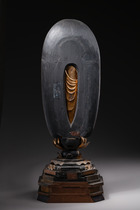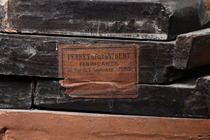"Amida Buddha", Edo period (1603-1868) · Japan · ID: 3052296
Hans Heinrich Josef Meyer (1858-1929), Leipzig, Germany
By descent through the family
Description
wood, lacquered and gilded, glass, four parts, mortised into each other, old label: “Perrett & Fils & Vibert…”, rest.
Amida-Buddha stands on a lotus flower above a multi-stepped pedestal. A floral ornamented halo surrounds the figure. His beautiful round face is adorned with fine features. Small glass stones mark the “urna” in the centre of the forehead and the “usnisa”, symbolising wisdom and enlightenment. Buddha displays the “jobon gesho” gesture, one of nine different “mudras” (hand gestures) which determine the nine possible paths for the dying to enter paradise.
Buddhism was introduced to Japan in the sixth century AD. Early forms of Buddhism that arrived from China and Korea were chiefly those of Mahayana or Esoteric Buddhist practices that emphasised a concept of universal salvation via elaborate ritual and the worshiping of a complex array of deities.
At the end of the 10th century, “Pure Land Buddhism” developed, centred on the worship of the “Amida Buddha”, also known as the Buddha of Immeasurable Light and Buddha of Limitless Life. Amida presided over a heavenly paradise and promised salvation and rebirth in his paradise for all worshippers.
“Amida Buddha” was usually depicted sitting on a lotus flower. From the 12th century onwards, however, he was often shown in a standing pose, descending from the heavens to fetch his devotees and personally transport them back to his blissful paradise. This concept was first introduced in the Ojoyoshu of 985 (“The Essentials of Pure Land Salvation”), an immensely popular compendium written by the monk Genshin (942–1017), which prescribed a standing statue of about a metre in height to be erected for one’s last rights to ensure a smooth passage to the “Pure Land”.
Comparing literature
NGV, Art Journal, Wayne Crothers, Japanese Amida Buddha, 30 Jan 2013

